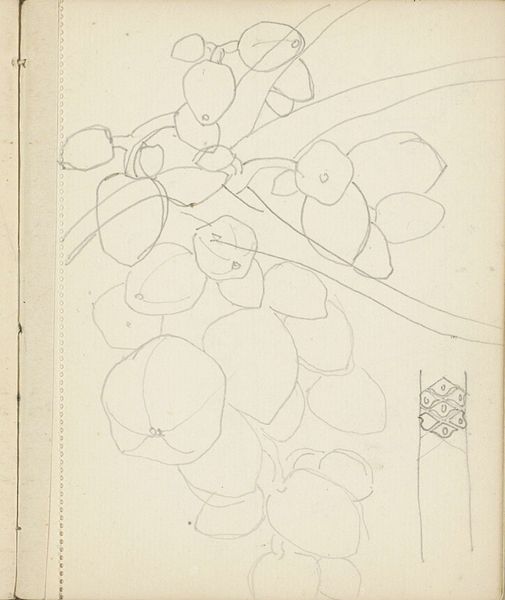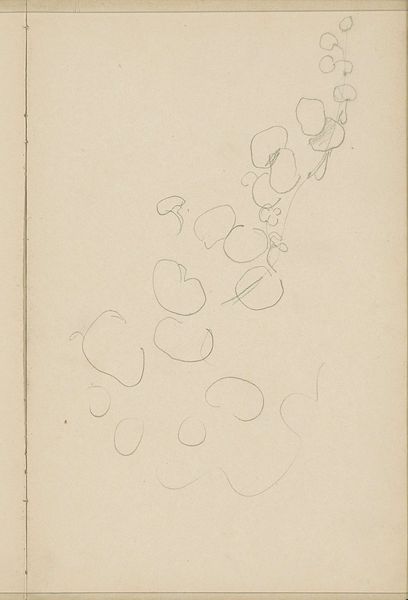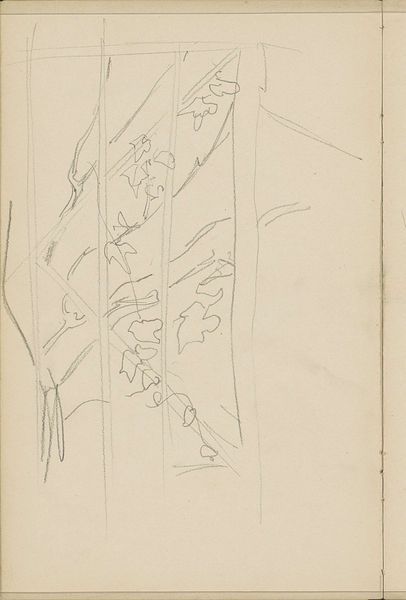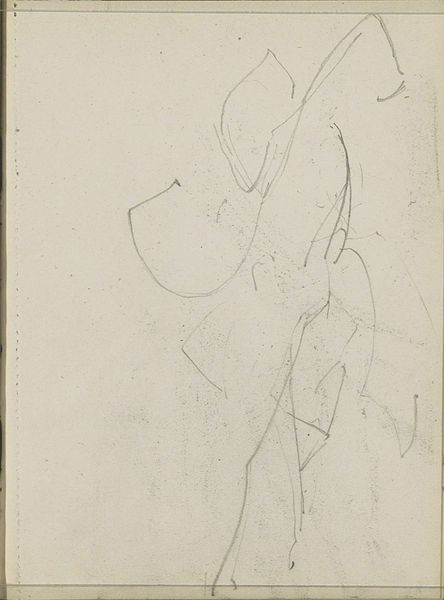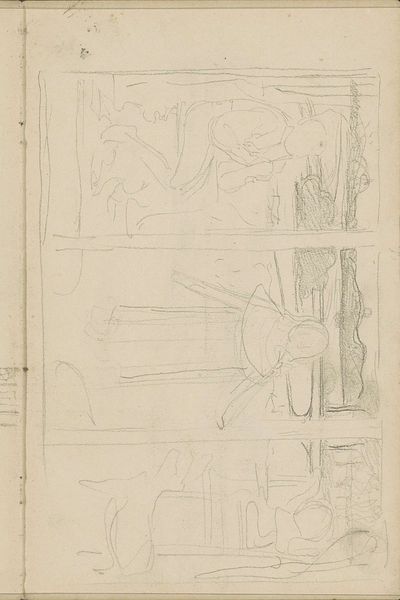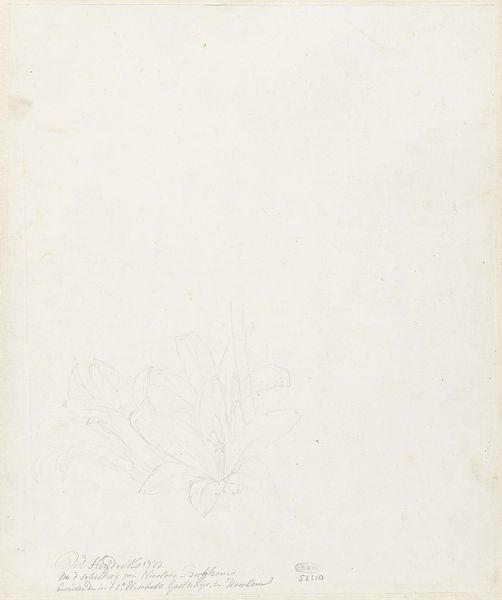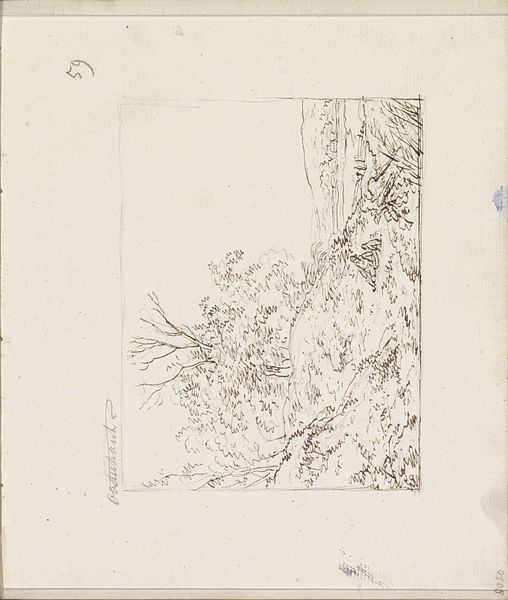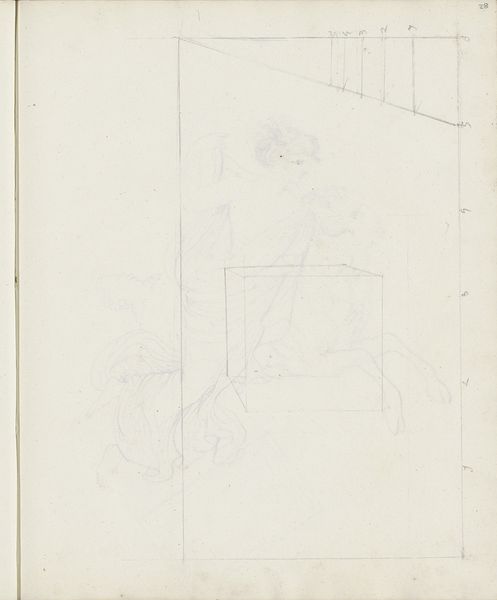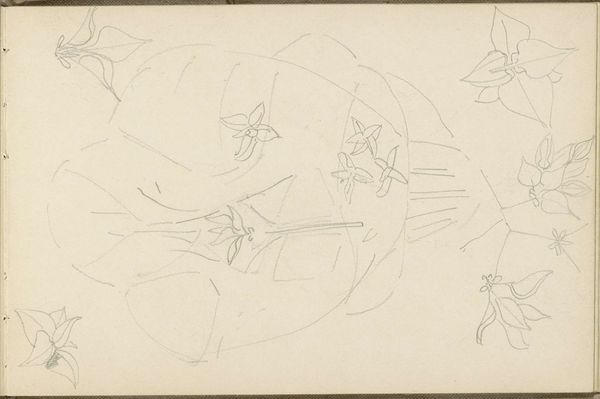
Copyright: Rijks Museum: Open Domain
Editor: So, here we have "Bladeren van een plant," or "Leaves of a Plant," a pencil and paper drawing by Antoon Derkinderen, created sometime between 1889 and 1894. It feels almost ephemeral, unfinished. What catches your eye in this piece? Curator: Immediately, I'm drawn to the artist's deliberate use of the pencil. Look at the very visible marks, the sketch-like quality. It emphasizes the process of *making* over a polished final product, disrupting a clear distinction between drawing and finished art, foregrounding the labor involved in its production. Do you think it's intentionally rough? Editor: I hadn't considered that, but now I do. It feels more like a study, maybe, like preparatory work. Curator: Precisely! And considering Derkinderen's broader oeuvre, it raises interesting questions. Was this a necessary stage in his artistic labor? Also, think about the paper itself. It’s not just a surface; it's a manufactured commodity. Where was it sourced? How readily available was it to an artist like Derkinderen? These are material considerations which have been historically undervalued, in my opinion. Editor: So you’re saying understanding the materials and their context adds another layer of interpretation? Curator: Absolutely. We can consider the very real economic conditions of late 19th-century artistic practice. For example, How the drawing becomes something almost documentary rather than illustrative. Editor: That’s a fascinating perspective. It really shifts the focus from the image to the means of its creation. Thanks, I never would have noticed that! Curator: Glad to point you in a fruitful direction. Considering material concerns reveals often invisible forces at work in all forms of art.
Comments
No comments
Be the first to comment and join the conversation on the ultimate creative platform.
